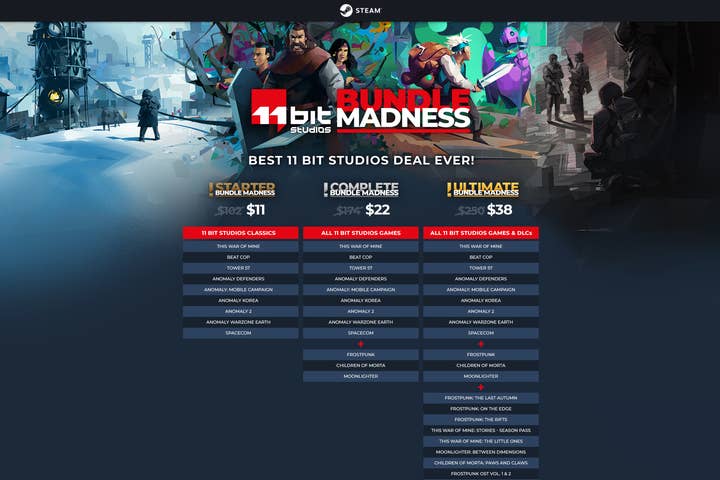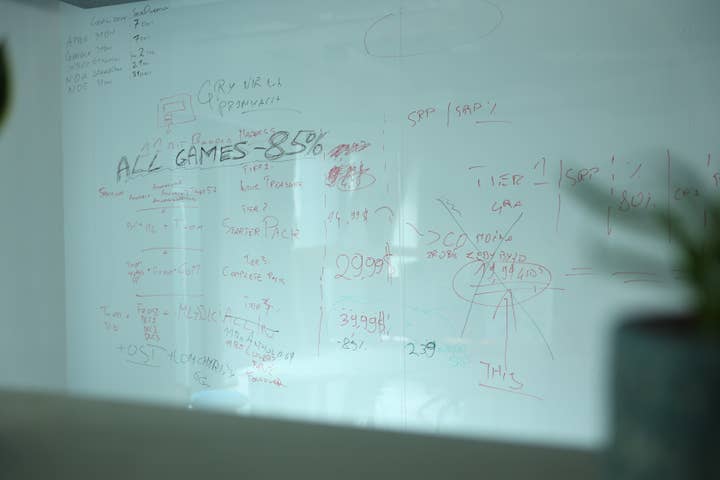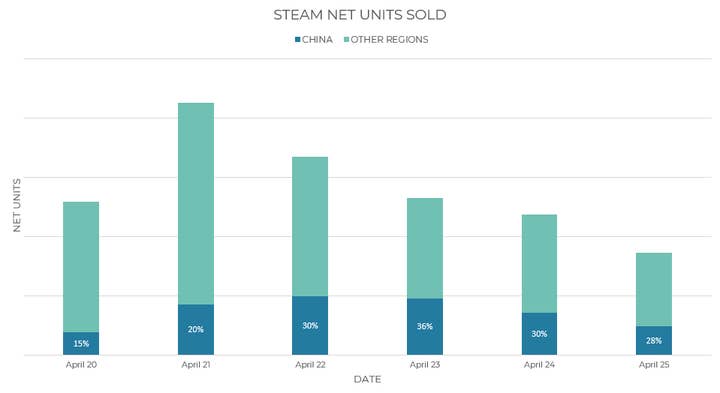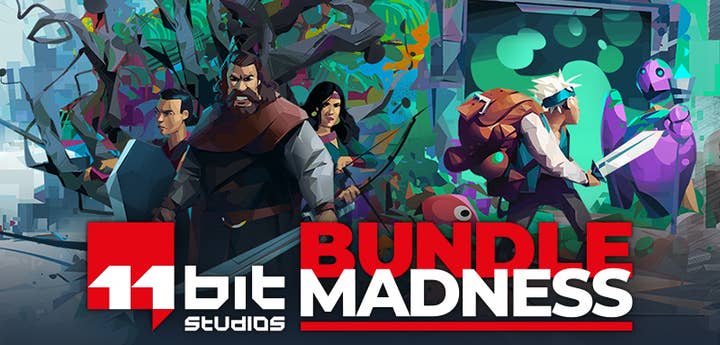How to make bundles work on Steam
Piotr Bajraszewski breaks down the mechanics of 11 Bit Studios' Bundle Madness sale, and how it sold nearly 1m units in a week
Selling games could be a creative process. At the core, we all -- as publishers and developers -- have the same goal. To make a great game first, and sell it for a fair price later.
After fulfilling the first task, the second one seems somewhat obvious. Because all good games sell, right? Yes. Well, at least in theory. The most exciting thing is of course Day 1, and there is much you have to do prior to launch to have the best possible Day 1.
However, we won't focus on the release day here, but instead we will discuss the next step, so lifecycle management. While it may not sound as exciting as the release, it's crucial as it's up to you how well your game will perform in the long run. And that long run can be very important. Last year, 11 Bit Studios didn't have any full release, but it still was the best year in the history of the company in terms of income.
Some lifecycle management tools are obvious, like discounts or deals with partners, however even in those cases the key is to plan all discounts in advance and never miss a good opportunity. On top of that there are many ways to creatively amplify your sales. 11 Bit Studios' Bundle Madness sale on Steam was such an amplifier.
The idea was pretty simple: to bring a well-known bundle formula to Steam. And it worked very well, as we sold nearly a million units of games and DLCs combined in a week. Let's go through the challenges we had to overcome and why it ended being a huge success.
The core idea behind Bundle Madness
Good games are of the essence. And after all, everything we do, we do with players in mind. We're proud of our portfolio. Players have spent more than 129 million hours playing 11 Bit Studios games on Steam. So we wanted to give them the opportunity to fill their collections with titles they missed or waited to get at a discount.
In the highest tier, players got all 11 Bit Studios titles and all additional content -- so for $38 they got games worth $227
Bundle Madness was a custom made offer especially for those that already played one or a couple of our games. We wanted Bundle Madness to be something more than just another sale. It needed to be something that would stand out from the crowd. A gem that is hard to pass by.
We offered players our best discounts ever on single games, and we used the bundle mechanic to offer an additional discount, when players were buying more games at the same time. In the highest tier, players got all 11 Bit Studios titles and all additional content -- so for $38 they got games worth $227.

Devaluation: the biggest enemy
Placing an exceptional offer on the table could end up hitting a jackpot in terms of sales volumes. But at the same time, you could fear devaluating the core value of your games or annoying those who just bought them at a higher price.
We managed to find a sweet spot by doing a bundle that deducts the price of already owned games from the overall bundle price. So players who got any of our games wouldn't feel left out. For them, the cheap bundle was even cheaper.
There are many bundles on Steam, so what was unique?
Of course, bundled games are not a rarity around the web or even on Steam, but their potential visibility is limited. On top of the usage of the "complete the set" mechanic, the main difference here was setting up a high 60% discount on the bundle itself.
Recently, many bundles that I saw featured on Steam were not actually an attractive offer. People were not buying the whole bundle at once, which is the core idea here, so it's probably that the bundle discounts weren't attractive enough for them.
So if you want to interest the audience in the whole package, then an extra discount should be applied. We believe that our 60% discount worked very well in that case.
How to select the games for each bundle tier
Deciding which games go to which bundle was crucial. We didn't want any tier to feel cheap, just tailored for different needs. So we offered three different tiers, but even the lowest one contained very good games, including This War of Mine.
We spent a lot of effort and money to redirect huge traffic to the bundle landing page, so there was no sense in making a "bad tier." If one of your tiers is visibly not attractive, the whole thing can blow up in your face. Players will complain about that particular bundle in the comments, which may give the impression that the whole offer is bad. And still none of them will buy the cheapest one.
We needed players who entered the landing page to not be able to decide quickly which tier was best for them, but felt that all of them were attractive. We wanted the choice to be which bundle to pick, not whether they should pick a bundle at all. If you want a good reaction from the players, you have to be fair with them.

How to promote a sale
Of course, even the greatest offer could go unnoticed without proper communication. The next step was to tailor an engaging message around Bundle Madness. Honestly, media outlets aren't especially keen to write about promotions per se. The trick was to hit two birds with one stone.
At the time of the Bundle Madness negotiations, Frostpunk surpassed three million copies sold, which was a huge milestone. Combining those two announcements created the one-voiced, strong message we were looking for, so media outlets got their story. An offer on Steam also proved to be newsworthy thanks to the "showing gratitude" approach. At least, we believe it was that way.
What extra layers can be added to the communication?
Last but not least -- additional activities helped to broaden the communication. Live streaming plays a huge part in boosting up the visibility of your products among millions of players. That's why our PR team sweeps Twitch daily in search for new creators who stream our games. And we could clearly observe that a group of new channels started to play Frostpunk after it being featured as a free Epic Games Store title.
We also have contacts with those who played our games in the past -- some of them being real fans of 11 Bit Studios' work -- so we approached some of them and asked if they'd willing to live stream one of our titles during the Bundle Madness sale period, and presented them with keys for the bundles for their viewers.
Live streaming plays a huge part in boosting up the visibility of your products among millions of players
Another great way to notify people about what is happening is our newsletter. Some may consider newsletters being an old-school thing in the era of social media, but the truth is that you have a direct communication route with those willing to put their email address in your newsletter base, almost like with the people who wishlisted your game on Steam. And looking at the open rate of our fresh news deliveries, it was a good move to start sending them back in 2020.
And of course -- we let our industry friends know that we got a cool bundle offer rolling out on Steam. After years of events and networking, we're in contact with tons of excellent people from studios and publishers around the world. And those excellent people are happy to spread the word on their social media platforms, and we're always happy to do the same for them.
Reaching out to Chinese players
Gaming is a global business, albeit that doesn't mean you're equally reaching every part of the globe with just a snap of your fingers. We have been tightening our presence in China constantly for years. But only recently did we get a dedicated manager to take care solely of that region.
Chinese media got information about Bundle Madness in their native language shortly after the US and European journalists. And with this well-targeted reach-out, sales in China almost instantaneously peaked. So our lesson is that direct-spot hitting, and knowing which Chinese media outlets to target, is necessary and can be really beneficial in terms of visibility.
How to "stay alive" as long as you can
Usually, even with a good offer, even after a good start, the sales are going down pretty quick. Especially when we are talking about sales or events that depend on the visibility from partners. So organising the Bundle Madness sale was not the only challenge. Equally hard work started when the sale was live, as it was high time to use all the cards we had in our prepared-in-advance deck.
Our goal was to achieve a snowball effect during the sale period, and with that in mind we made it a strictly time-limited offer, lasting for a week. As mentioned before we reached out to press and partners. But we also had the marketing budget for dedicated takeovers on pages like Rock Paper Shotgun. We made trailers that highlighted the offer, and made performance marketing campaigns to reach out to the biggest audience possible.
So basically we did everything that came to our mind that we thought could help with increasing the visibility. We had a Steam frontpage visibility only for the first 48h -- so naturally, there was a decrease after that, but we managed the risk mitigation successfully.

The pros and cons of Bundle Madness
The goodwill and engagement of our friends at Steam was a huge part of the success. We are always trying to figure out the best solution not only for us but also for our partners to be pleased. The ability to create a custom landing page on Steam has been possible for about a year and a half now, and it does not seem like a huge change but actually, without it, such a custom offer wouldn't have been possible or it would have been very poorly described.
So it's crucial to keep up to date with platforms and what is currently available on them, as it changes over a time -- for example discount coupons are almost not doable on Steam at the moment and they were very useful to upsell your game back in the day. We sold nearly a million units, and lifetime sales of our games on Steam are now more than 12 million units. Obviously it worked very well, but if something is not working, it's crucial to understand why. If a bundle or another idea like a demo or a DLC didn't work on one platform it does not mean it won't work on another platform or with another game.
Our Ultimate Bundle managed to reach the fourth spot on Steam's global top sellers list, and we consider it a sturdy performance.The bundles themselves weren't anything new. But combining it with a "complete the set" formula, the right messaging, and doing it on Steam, gave us results that we were pleased with.
In terms of things that we could have done better, we unfortunately weren't able to properly reach an essential group of customers with info about the Bundle Madness. Those who had previously wishlisted our games weren't notified about the whole bundle idea, but only about a discount on the particular product. A fair amount of people still "sitting" on those Steam wishlists look like a fair reason to be back to the drawing board. And once again, try to sell creatively.
Piotr Bajraszewski works at 11 Bit Studios as business development lead. He is responsible for sales and product lifecycle management, partner relations, paid ads, and searching for new business opportunities.
